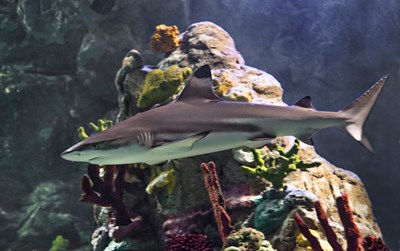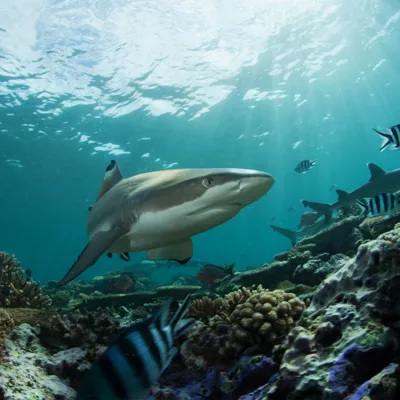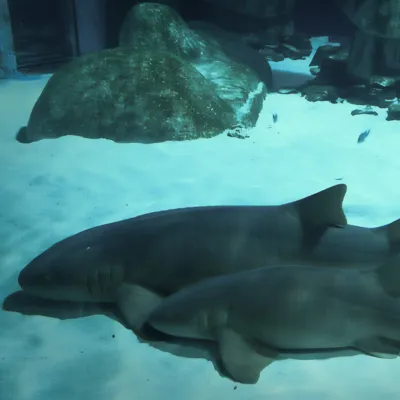- SEA LIFE, Ocean Tunnel
Sharks have lived in our oceans for more than 420 million years... that makes them older than trees!
Their brains have evolved to become more intelligent and devoted to their senses – mainly their ability to smell. There are over 500 species of shark in our oceans and you’ll meet different species when you explore our Ocean Tunnel!
- SEA LIFE Trust is actively working with the Shark Trust to campaign against unsustainable shark fishing in EU waters. SEA LIFE is also proud to be coordinating the European Black Tip Reef Shark breeding programme.
Black Tip Reef Shark
We love our Black Tip Reef Sharks, they’re jaw-some! And with the prominent black markings on their fins they are easy to spot.
Found on the tropical coral reefs of the Indian and Pacific Oceans, Blacktip Reef Sharks prefer shallow, inshore waters.
Baby black tip reed sharks are often the favourite prey for larger groupers or larger sharks so they spend a lot of time hiding away from threats. Poor little guys!


These sharks are viviparous
- They give birth to live young rather than laying eggs. In the first few years of their life young Black Tip Reef Sharks often fall prey to larger fish such as groupers, Grey Reef Sharks, Tiger Sharks or even bigger Blacktip Reef Sharks. Juvenile Black Tips often use mangroves as a nursery ground; Hiding amongst the tightly woven roots where bigger Sharks can't reach them.
- The Blacktip Reef Shark’s diet is composed primarily of small teleost fishes, including mullet, groupers, grunters, jacks, mojarras, wrasses, surgeonfish, and smelt-whitings.

Did you know?
- Nurse sharks prefer to dwell near the seafloor in the warm, shallow waters of the western Atlantic and eastern Pacific oceans, and they can grow up to 9.5 ft.
- Most sharks must keep moving to breathe? That's because they need water to flow over their gills. However, Nurse Sharks can stop swimming and rest because they can pump water through their mouths and gills while they're sitting still